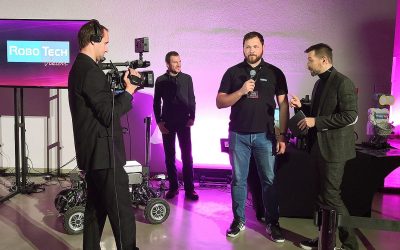LATEST POSTS
Androver II participated in the Talks conference
Androver II participated in the Talks conferenceNovember 24, 2018 | Presentation The team of RoboTech Vision presented its robot Androver II at the Talks conference in Bratislava in front of important people from diplomacy and various fields of...
Androver II robot passed tests at the European Space Agency
Androver II robot passed tests at the European Space AgencyNovember 17, 2018 | News Following the cancellation of NASA’s simulated mission to Mars in Hawaii due to injury and the resignation of a crew member, Androver II, in collaboration with...
Husky A200 robot autonomously follows the mark thanks to our algorithm
Husky A200 robot autonomously follows the mark thanks to our algorithmOctober 18, 2018 | Development A Husky A200 mobile robotic platform with an UR 5 robotic arm, a Novatel SMART6-L GPS system, a Velodyne Puck 3D laser scanner and a Hokuyo 2D...







